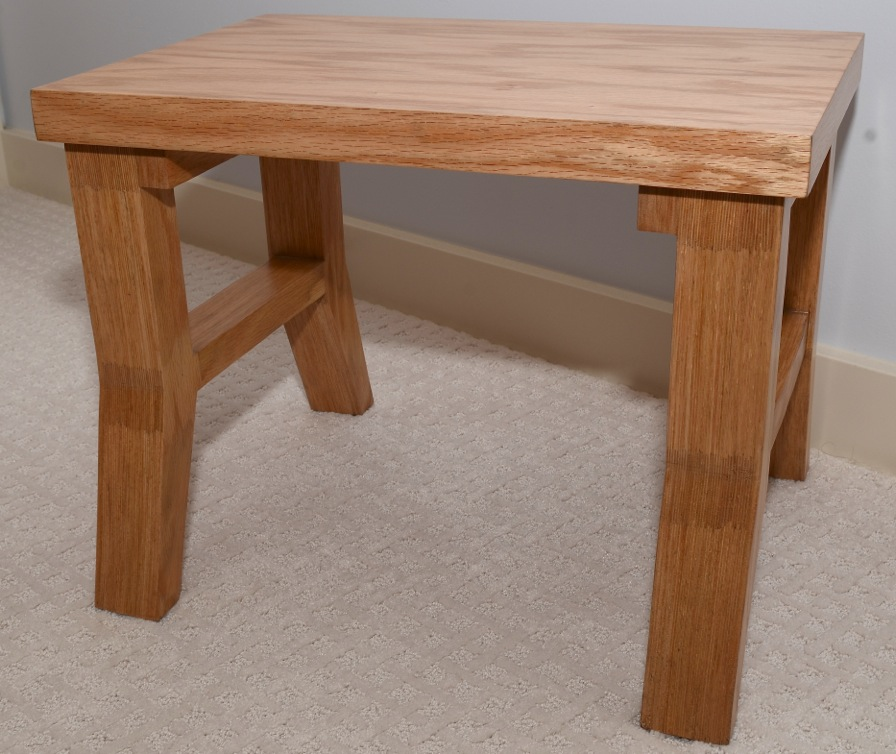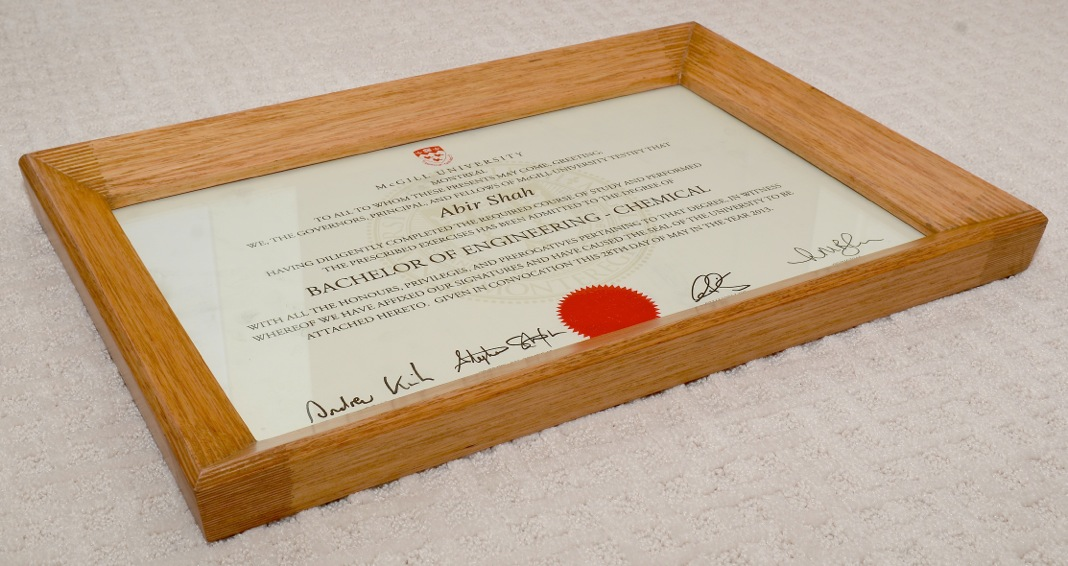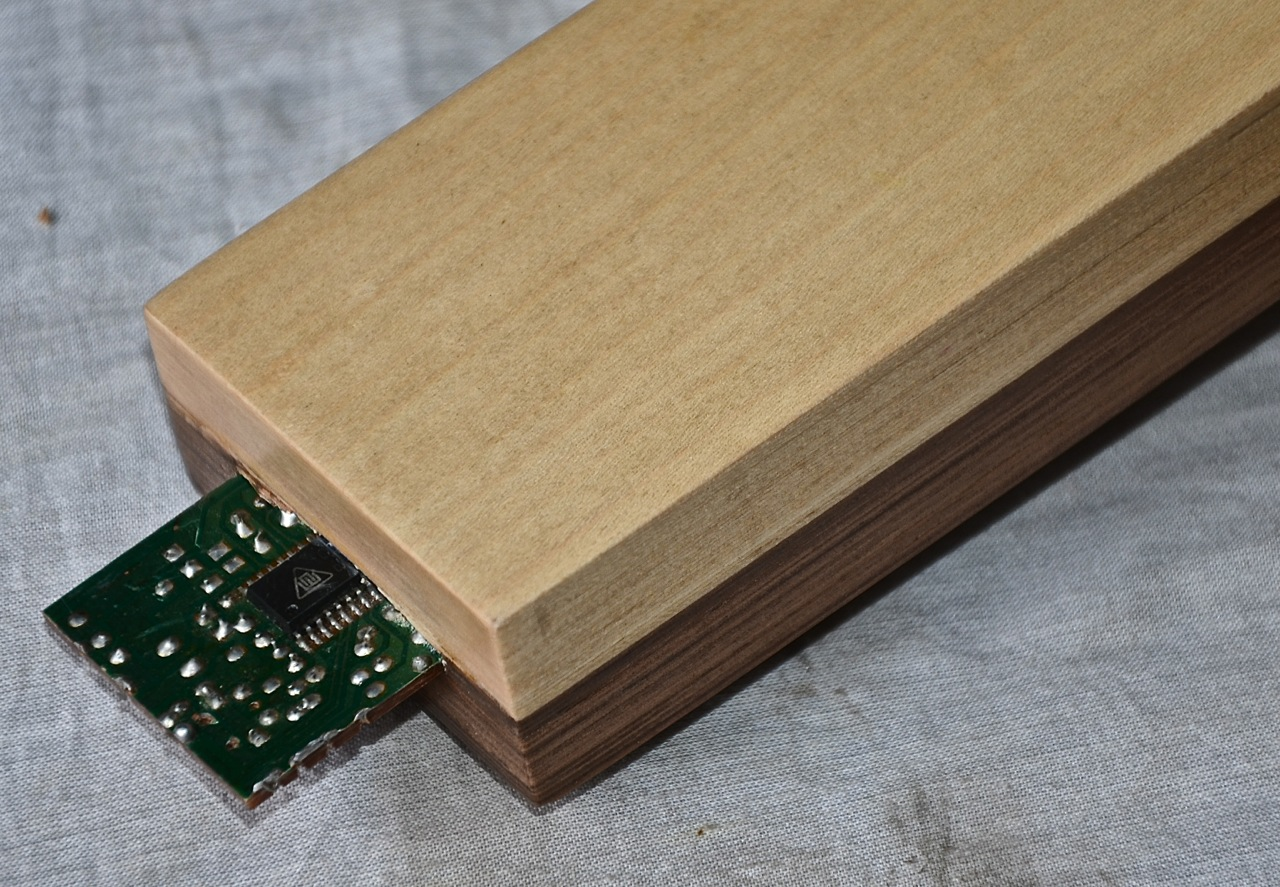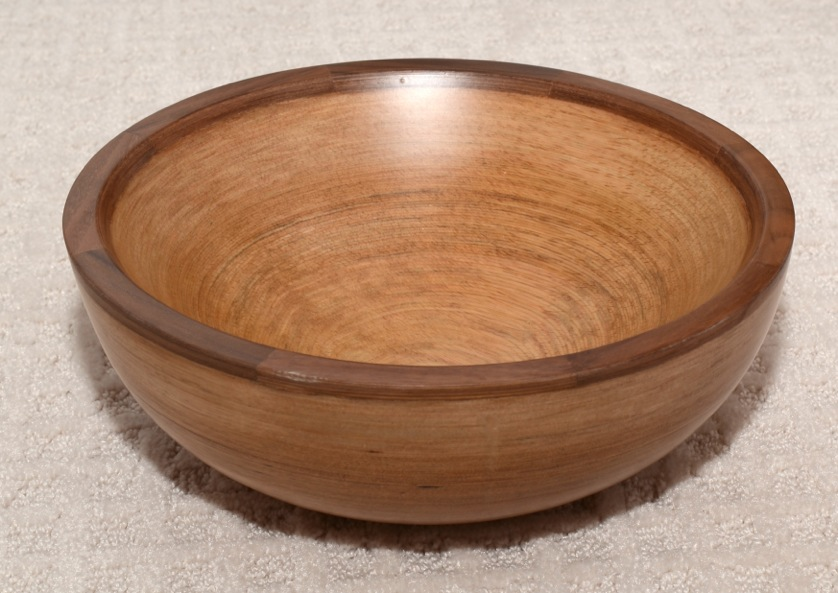
4 AXYZ CEO Samir Shah provided us with several incredible examples produced by their new process. When you see them and read his explanations, you’ll understand why we think this technology is so important.
As described in our interview with Shah earlier, the new process they’re developing is capable of producing wood furniture using an additive manufacturing technique, similar to and providing the same benefits as 3D printing. We asked to see examples of the process and Shah provided these with explanations.
Shah: A fruit bowl (image above) that verifies we can do double curves. It has an oak body and walnut trim, made in a single, monolithic piece. Approximately 87% less wastage than carving out of a single block.

Shah: Foot stool, made from 3 pieces instead of 9. Both side legs are monolithic and the top is screwed on with 6 screws (rapid assembly). Extremely strong. Tested for 500lbs +
Fabrication note: Normal carpentry requires each side to have 4 pieces separately machined. Then another machine would create joinery details. Then they would be assembled by hand. Then finished off again in carpentry before polishing. The legs you see are “woven” together in the joints and are rock-solid. No machine-dimensioning was required for different pieces and no joinery or assembly. Customization of an object like this would allow change of wood species / mix-match / dimensions / and more.

Shah: You can see how the frame as a flat object can be scaled up for doors and windows. The corners are also woven together to create an extremely solid monolithic construction (this is not 4 pieces joined together).

Shah: These are two ends of the same L frame (cut-away section of a window) to indicate the embedding of electronics and metals. Ignore what we are doing for a moment – there is no tool available right now to insert the metal that thin into a solid wood frame using conventional manufacturing. So we are getting into realms not possible today. Metal was inserted to act as a conductor (inside a natural insulant) but can also be used for reinforcement and security.
Now, after seeing these won’t you think a little differently the next time you walk through IKEA?

